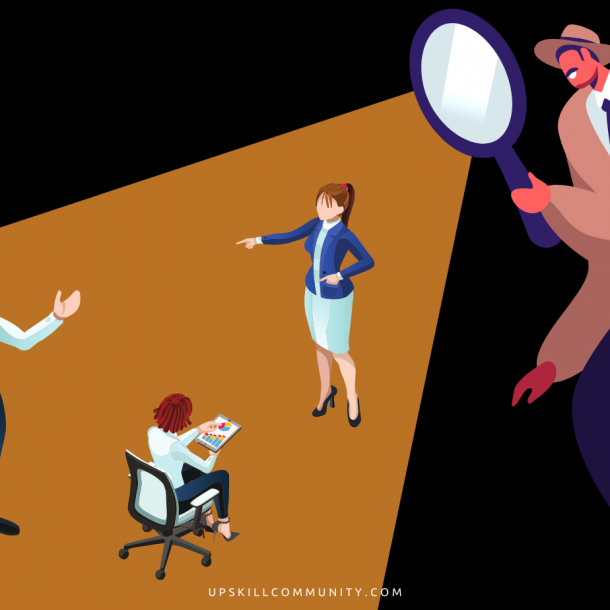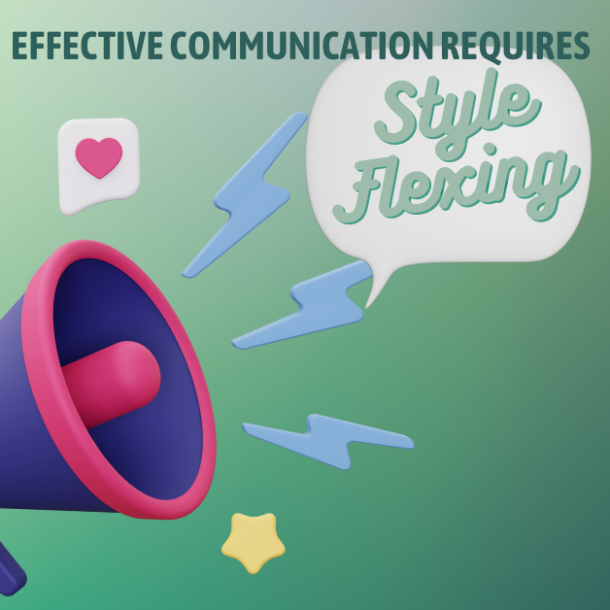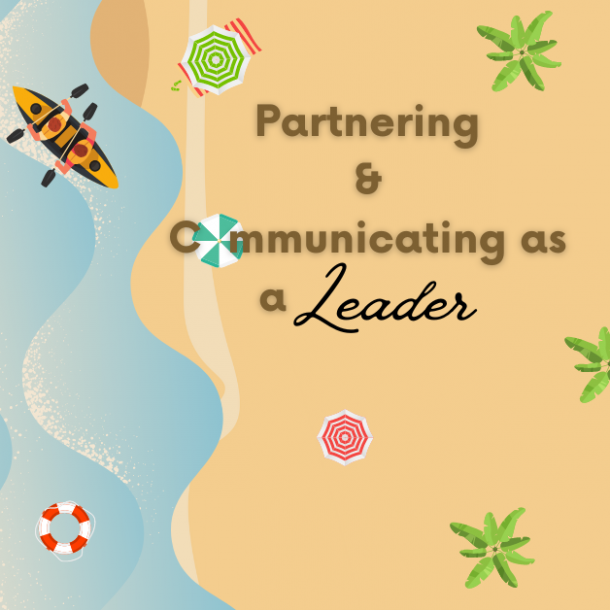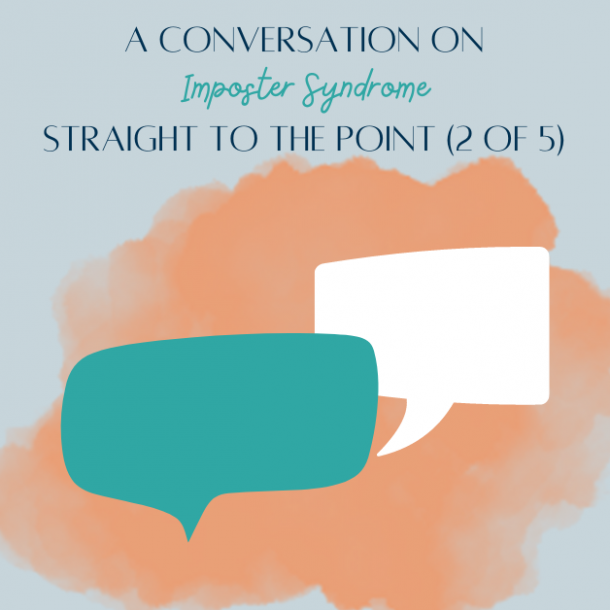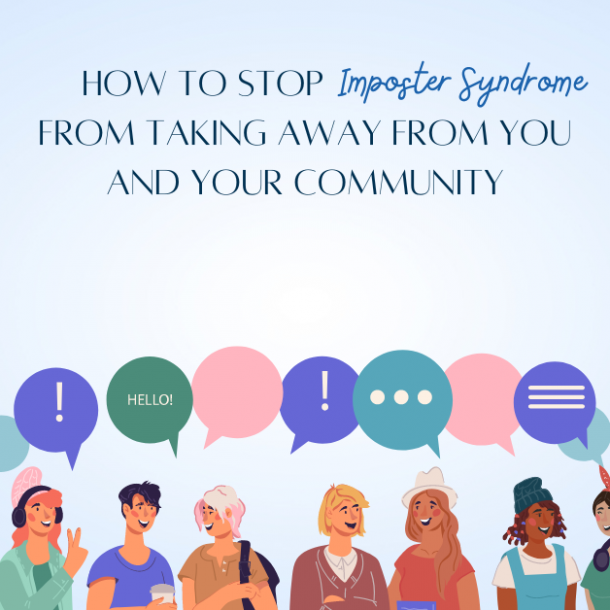
UpSkill: A conversation on imposter syndrome – Straight to the point (1 of 5)
In this blog post I am going to break down the greatest insights from my conversation with fellow Upskillers, Diana McIntyre, Cadeem Lalor, Tiffany Castell and Peter Walfall. The conversation will be broken down into five blog posts, where we dissect our own experiences with imposter syndrome, and strategies for overcoming it.
More importantly, we talk about how our environments are fostering the feeling of imposter syndrome in our lives. We also talk about environments that support us to reduce our feelings of imposter syndrome. We invite you to reflect on how it is showing up in your life and the role of your environments in fostering imposter syndrome in your life or in helping you reduce this feeling.
Imposter syndrome is a big topic and I’ve discussed it on the podcast for a while. This is the topic that people have requested the most, and a topic that many of us are learning about and able to relate to. Let me introduce you to the UpSkillers who helped to shape this blog post.
First, there is Peter Walfall, a management professional in the insurance sector and lifelong learner.
Then there is Diana McIntyre, an executive coach and faculty member at George Brown coaching.
We’re also joined by Tiffany Castell — a Detective-Sergeant with the Toronto Police Service — and Cadeem Lalor, an associate editor with Moneywise.
We started off our discussion examining when we first became aware of imposter syndrome in our lives.
For Peter, he realized it was a feature present throughout his life. He didn’t have the terminology to define it but was a constant. It showed up in professional circles and in familial circumstances as well. His imposter syndrome presented itself mostly through silence, following the adage that it is “Better to remain silent and be thought a fool than to speak and to remove all doubt.”
For Diana, it was the first time I did a lecture She thought to herself “What do I have to say that people would actually be interested in hearing, and why do I think I have the expertise to deliver on this subject? And are people going to be judging it?”
Diana is more comfortable with students. Imposter syndrome shows up more when she is presenting in front of colleagues. She then has more worries. “Are they judging? Is there criticism of the information because of how I’m presenting it?”
Tiffany, like Peter, wasn’t aware of the impact of imposter syndrome until she heard the terminology about three years ago and came to understand what it meant. She came to realize it was a constant part of her life.
“In some ways I confused it with trying to be very humble, and trying to think ‘Maybe I’m not the best person for the job.’ There’s so many other people who are better out there. And yes, people are going to be judging me when I’m speaking about whatever it is because I’m not the foremost authority. So I need to work so much harder to at least be 50% as good as some of the people out there who should really be at the forefront.”
For Cadeem, the youngest member of the conversation, imposter syndrome kicked in when he entered the workforce at 22. Academics were smooth sailing, compared to work.
Once he entered the workforce, where he made mistakes more and had more to learn about office life in general e.g. workflows, hierarchy, he felt more out of place.
Making mistakes at work would often leave him thinking “Am I qualified to be doing this? Do I deserve to be here?” Part of being able to slowly get over that has been finding a workplace where he feels appreciated and valued.
Getting positive feedback, unprompted, from supervisors has helped. That positive feedback has been a big piece of what’s allowed me to acknowledge imposter syndrome and combat it.
For myself, I understood imposter syndrome academically. I could define it and explain it, but thought it was something that was not relevant to me. However, with further examination I realized that it has been around my entire life.
I realized that I grew up in a very rural community and when I got out of that community and went to an urban centre I was an absolute imposter when I went there. I didn’t know how to fit in, I didn’t have the right style of clothes, I didn’t know how to do makeup, I didn’t understand how to fit into that urban setting. I felt out of water and I was a complete imposter. Again, I think I felt that very deeply when I came to Canada, particularly not knowing the culture. Everywhere I went I felt as if people would realize I have an accent, I don’t fit in, I’m a misfit.
When I went to the University of Toronto I remember also being a mature student, on top of being an immigrant with an accent. It was almost overwhelming, how uncomfortable I felt.
As Cadeem said, positive feedback from professors and other students helped make me feel like “I belong here.”
Due to that realization we decided to dive into the role of the environment on imposter syndrome.
How does the environment create the conditions that are ripe for making people feel the imposter syndrome, versus supporting anyone no matter where they come from to feel that sense of belonging or support that makes them get on a path to reduce the feeling of imposter in their lives.
Diana brought up a good point, pointing out that the higher leadership needs to create an environments that lets people be successful and allows some mistakes during the learning process.
Being afraid to make mistakes can ultimately foster imposter syndrome since that fear makes people more afraid to share new ideas and ask questions.
In a lot of hi-tech environments, failure is encouraged. Failure is not a bad thing. You learn from it, you develop skills to move forward.
There also needs to be more work around recognizing employee strengths. Strengths help us build our confidence and understand what we are really good at, what we’re passionate about. It also helps us to understand other people’s strengths and how we work together to create collaborative environments where we need each other and complement each other. That kind of environments puts confidence in all people and also improves how we work together as a collective.
But what about the environments where you can’t make a mistake? How do we deal with those kinds of environments?
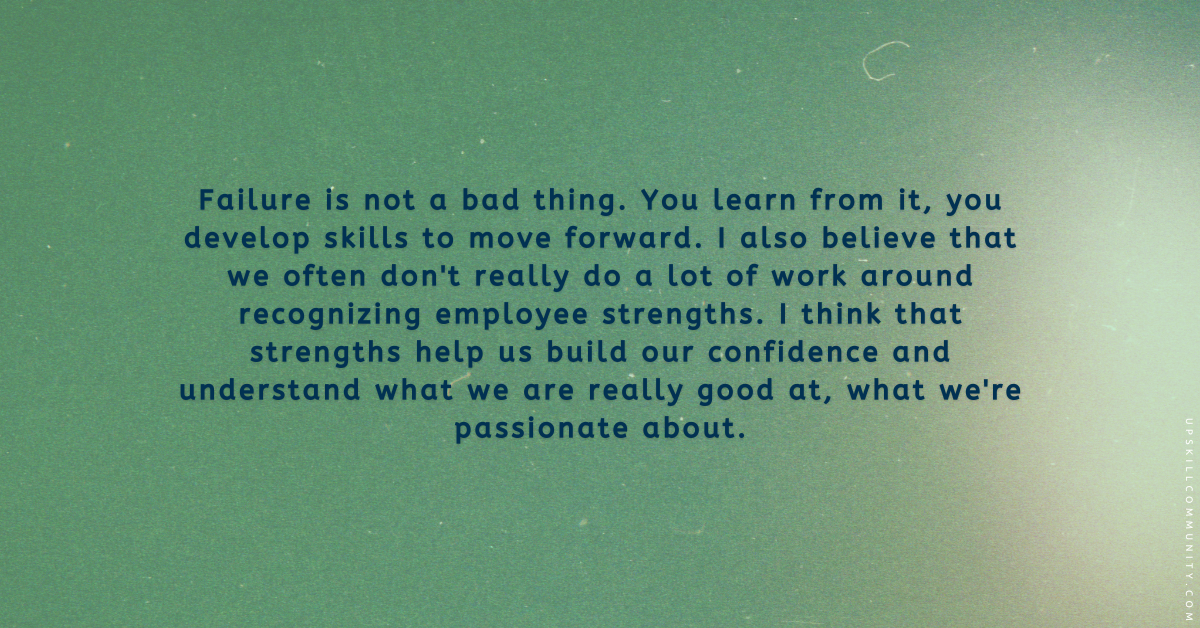
The short answer, is to move, if you can.
For Peter, such environments require change from the leadership. If leadership recognizes that they need to create a supportive environment to bring the best out of their employees then that goes a long way to helping the individual shine and step out of the shadow of an imposter syndrome.
A leader may also be worried about their image and being the person who asks a “stupid question?”
It can be tough to give yourself the impression to appear foolish in order to learn. That is part of the hurdle that individuals operating in an environment should overcome. We need to give ourselves permission to recognize that we are continuing to learn, even as the environment evolves.
It’s about allowing ourselves that permission independent of our role in that environment.
As Tiffany added, the systems we work in can serve as an imposter syndrome multiplier or perpetuator.
For Tiffany her imposter syndrome showed up less in the work environment and more in the school environment. This was tied to the way the system was set up. In elementary and high school, and even up to undergraduate, you’re taught the teacher is the holder of the knowledge. The teacher passes the knowledge on to you and you’re supposed to sit quietly.
Moving to the doctoral level, Tiffany gained the confidence to challenge ideas and realized she had some expertise to add.
It was Tiffany’s first time questioning the knowledge she’d been given. In contrast, her experience in law enforcement also introduced her to very rigid hierarchies.
She was rarely in an environment where she felt like she was worthy of speaking up or should have a voice in a certain circumstance. There was no “psychological satefy.”
**
Take a moment to think about the first time you became aware of imposter syndrome in your own life. How is it showing up for you? How is it affecting you? How are you feeling about it? Most importantly, take time to notice how your environment is impacting your imposter syndrome. Is it creating the conditions that are fertile for cultivating more and more feelings of imposter syndrome?
Is your environment providing you the tools, the support, that is necessary for you to feel a greater sense of belonging, a sense that you’re contributing, a sense that you’re valued, a sense of community that helps to reduce the feeling of imposter syndrome in your life? How is your environment working out for you?
We’ll continue the conversation next week, focusing on the concept of psychological safety.

